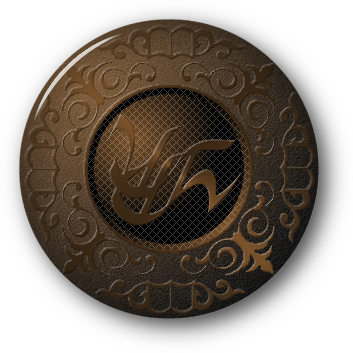

|
|
Now that you know how verbs work in general, let's look at how to conjugate a D'ni verb in the simple present tense. As you learned in the last chapter, tense is indicated with prefixes, person and number with suffixes. The simple present tense is perhaps the simplest to learn, as it has no tense-indicating prefix and uses the suffixes, also known as personal endings, that you were briefly introduced to in the last chapter. To review, those personal endings are:
Remember that these suffixes are attached to the root verb, which we obtain by removing b' from the infinitive. Also, note that the first person singular does not have a suffix to attach to the root. That is to say, the first person singular conjugation of the verb is the same as the root verb. For all tenses, the first person singular is identified by the absence of a suffix. It is therefore easy to confuse this unsuffixed verb with the infinitive, which also never has a suffix; remember that infinitives always have a b' attached to the front of the root verb. Here's an example of how a conjugated verb looks:
Because English doesn't have personal endings to identify each form of the conjugated verb, it needs to specify the verb's subject if we are to know who the verb refers to. Speak tells us nothing of who speaks; only when we specify I speak or you speak or the men speak do we have an idea. In D'ni, because each personal ending designates a specific person and number, we can figure out who the subject of the verb is even if that subject is not mentioned. Simply by looking at the suffix, we know that the subject of the verb mEsen (mēsen) is s/he. In fact, many D'ni verbs are written this way, without any mention of a subject. The rule is that when the verb's subject is a pronoun, it is implied by the personal ending and omitted. Pronouns — I, you, he, she, it, we, you plural, they — are "placeholder" nouns that stand in for other nouns, often names of people.
Remember that the . mark indicates the beginning of a sentence. In the first two sentences, the subject of the third person singular verb speaks is not a pronoun — Atrus is a person's name, a proper noun, and student is a standard noun, like pen or mountain. The third sentence, however, has a pronoun, he, for its subject. He could be standing in for either Atrus or the student; because it's a pronoun, a placeholder, we don't know for sure which one. Looking at the D'ni, the subjects in the first and second sentences are specified, and so they are written out. Since the subject of the third sentence is a pronoun, however, it is implied by the personal ending and thus isn't written out. The same way that we don't don't know whether he refers to Atrus or the student, we can't be sure what the subject of mEsen is. To be precise, all we do know for sure about mEsen is that its subject is third person singular; thus, it could be translated as he speaks, she speaks, or even it speaks, since the subject of all three is a third person singular pronoun. |
||||||||||||||||||||||||||||||||||||
Myst, the Myst logo, and all games and books in the Myst series are registered trademarks and copyrights of Cyan Worlds, Inc. Myst Online: Uru Live is the sole property of Cyan Worlds Inc. The concepts, settings, characters, art, and situations of the Myst series of games and books are copyright Cyan Worlds, Inc. with all rights reserved. I make no claims to any such rights or to the intellectual properties of Cyan Worlds; nor do I intend to profit financially from their work. This web site is a fan work, and is meant solely for the amusement of myself and other fans of the Myst series of games and books. |